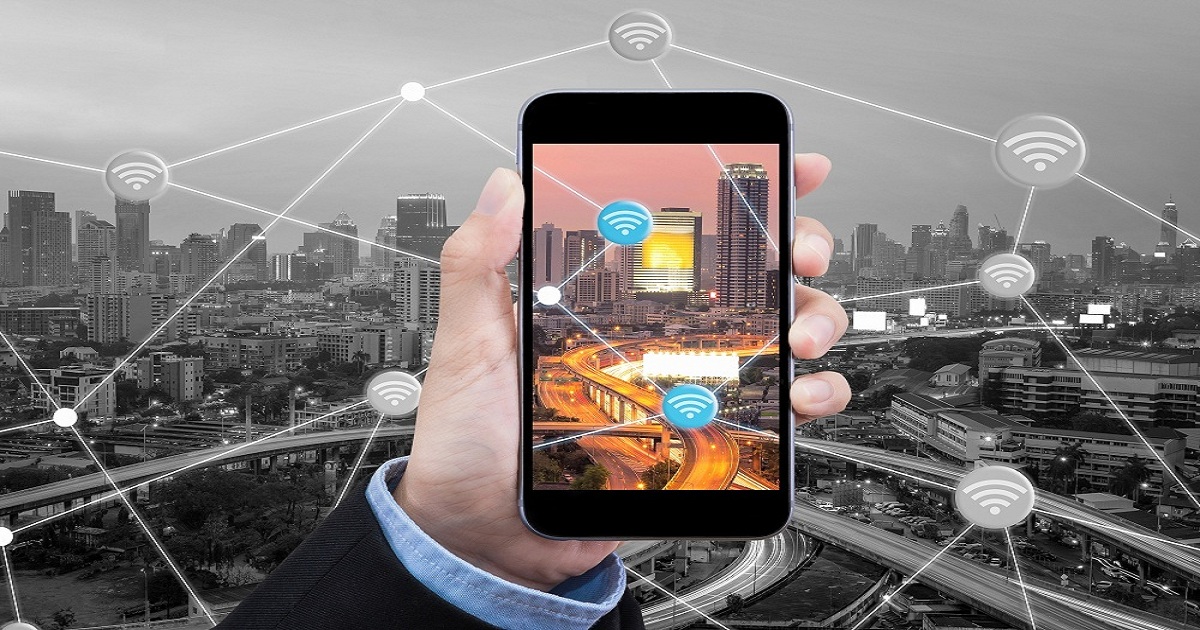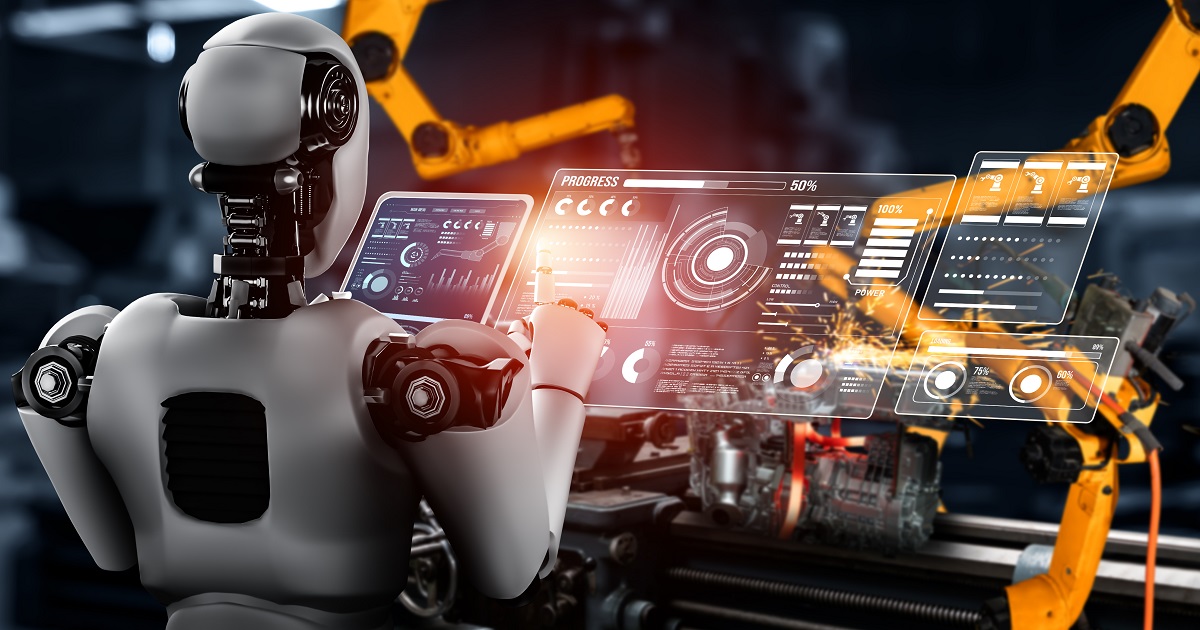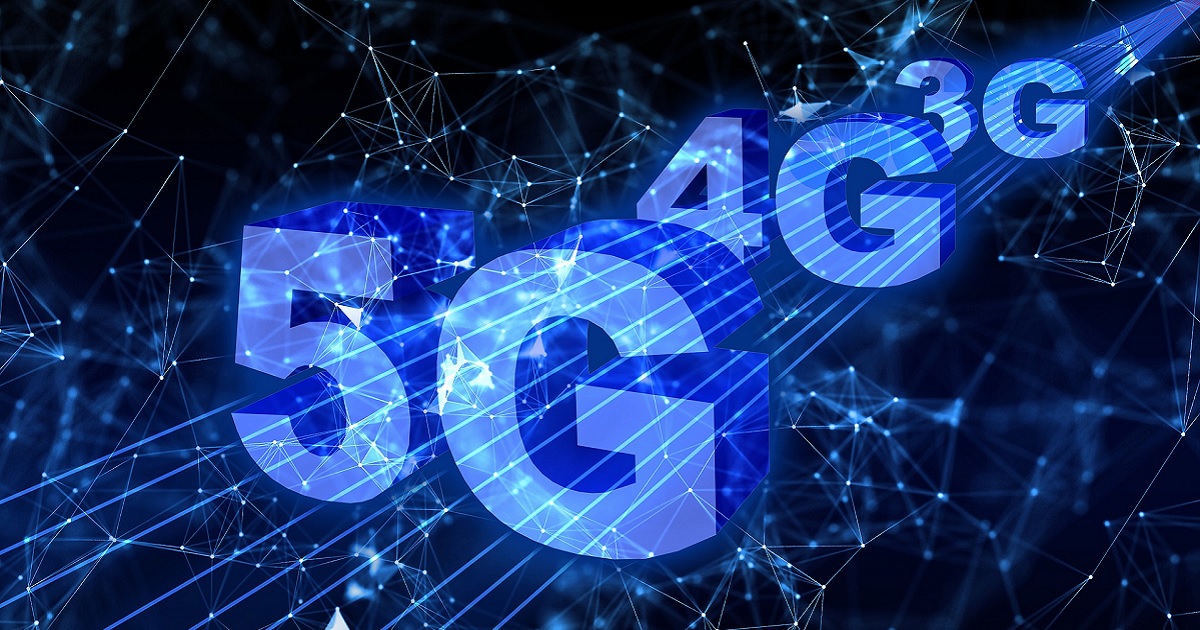
IoT Security
Article | October 11, 2023
Enhancing IoT security: Unveiling the significance of penetration testing in securing real-world IoT applications, identifying vulnerabilities, and mitigating risks for the protection of IoT data.
Contents
1. Introduction to IoT Application Security and Penetration Testing
1.1 Vulnerabilities of IoT application security
2. Fundamentals of IoT Penetration Testing
3. Considerations for IoT Penetration Testing
4. Methodologies and Approaches for IoT Penetration Testing
5. Takeaway
1. Introduction to IoT Application Security and Penetration Testing
Securing real-world IoT applications is paramount as the Internet of Things (IoT) permeates various aspects of any individuals lives. Penetration testing serves as a vital tool in identifying vulnerabilities and assessing the resilience of IoT systems against cyber threats. In this article, delve into the significance of penetration testing in securing IoT applications, exploring its role in identifying weaknesses, mitigating risks, and ensuring the integrity and confidentiality of IoT data.
1.1 Vulnerabilities of IoT application security
Expanded Attack Surface: The proliferation of IoT devices has dramatically expanded the attack surface, increasing the potential for security breach enterprise networks. With billions of interconnected devices, each presenting a potential vulnerability, the risk of unauthorized access, data breaches, and other security incidents is significantly heightened.
Risks: IoT devices often possess limited computational resources, making them susceptible to software and firmware vulnerabilities. Their resource-constrained nature can limit the implementation of robust security measures, leaving them exposed to potential attacks. Furthermore, a significant concern is the prevalence of default or weak credentials on these devices.
Diverse Threat Landscape: The threat landscape surrounding IoT devices is extensive and ever-evolving. It encompasses various attack vectors, including malware, botnets, DDoS attacks, physical tampering, and data privacy breaches. One notable example is the Mirai botnet, which compromised a vast number of IoT devices to launch large-scale DDoS attacks, leading to significant disruptions in internet services. In addition, IoT devices can serve as entry points for infiltrating larger networks and systems, allowing attackers to pivot and gain control over critical infrastructure.
Botnets: IoT devices can be infected with malware and become part of a botnet, which can be used for various malicious activities. Botnets are often utilized to launch distributed denial-of-service (DDoS) attacks, where a network of compromised devices overwhelms a target system with traffic, causing it to become inaccessible.
Ransomware: IoT devices are also vulnerable to ransomware attacks. Ransomware is malicious software that encrypts the data on a device and demands a ransom payment in exchange for the decryption key.
Data Breaches: IoT devices can be targeted to steal sensitive data, including personal identifiable information (PII) or financial data. Due to inadequate security measures, such as weak authentication or unencrypted data transmissions, attackers can exploit IoT devices as entry points to gain unauthorized access to networks and systems.
2. Fundamentals of IoT Penetration Testing
IoT penetration testing, also known as ethical hacking or security assessment, is a critical process for testing and identifying vulnerabilities and assessing the security posture of IoT devices, networks, and applications. It involves simulating real-world attacks to uncover weaknesses and provide insights for remediation.
IoT penetration testing involves identifying vulnerabilities, conducting targeted attacks, and evaluating the effectiveness of security controls in IoT systems. IoT pen-testing aims to proactively identify and address potential weaknesses that malicious actors could exploit. The methodology of IoT pen-testing typically follows a structured approach. It begins with attack surface mapping, which involves identifying all potential entry and exit points that an attacker could leverage within the IoT solution. This step is crucial for understanding the system's architecture and potential vulnerabilities. Pentesters spend considerable time gathering information, studying device documentation, analyzing communication protocols, and assessing the device's hardware and software components.
Once the attack surface is mapped, the following steps involve vulnerability identification and exploitation. This includes conducting security tests, exploiting vulnerabilities, and evaluating the system's resilience to attacks. The penetration testers simulate real-world attack scenarios to assess the device's ability to withstand threats. After exploitation, post-exploitation activities are performed to determine the extent of the compromise and evaluate the potential impact on the device and the overall IoT ecosystem. Finally, a detailed technical report summarizes the findings, vulnerabilities, and recommendations for improving the device's security.
3. Considerations for IoT Penetration Testing
Fuzzing and Protocol Reverse Engineering: Employ advanced techniques like fuzzing to identify vulnerabilities in communication protocols used by IoT devices. Fuzzing involves sending malformed or unexpected data to inputs and analyzing the system's response to uncover potential weaknesses.
Radio Frequency (RF) Analysis: Perform RF analysis to identify weaknesses in wireless communication between IoT devices. This includes analyzing RF signals, monitoring wireless communication protocols, and identifying potential vulnerabilities such as replay attacks or unauthorized signal interception.
Red Team Exercises: Conduct red team exercises to simulate real-world attack scenarios and evaluate the organization's detection and response capabilities. Red team exercises go beyond traditional penetration testing by emulating the actions and techniques of skilled attackers. This helps uncover any weaknesses in incident response, detection, and mitigation processes related to IoT security incidents.
Embedded System Analysis: Gain expertise in analyzing and reverse engineering embedded systems commonly found in IoT devices. This includes understanding microcontrollers, debugging interfaces, firmware extraction techniques, and analyzing the device's hardware architecture. Embedded system analysis helps identify low-level vulnerabilities and potential attack vectors.
Zero-Day Vulnerability Research: Engage in zero-day vulnerability research to identify previously unknown vulnerabilities in IoT devices and associated software. This requires advanced skills in vulnerability discovery, exploit development, and the ability to responsibly disclose vulnerabilities to vendors.
4. Methodologies and Approaches for IoT Penetration Testing
Mobile, Web and Cloud Application Testing
Mobile, web, and cloud application testing is integral to IoT penetration testing, focusing on assessing the security of applications that interact with IoT devices. This methodology involves various steps to evaluate the security of these applications across different platforms. For mobile applications, the methodology includes reviewing the binary code, conducting reverse engineering to understand the inner workings, and analyzing the file system structure. Sensitive information such as keys and certificates embedded within the mobile app are scrutinized for secure storage and handling. The assessment extends to examining the application's resistance to unauthorized modifications. In web applications, the testing covers common vulnerabilities like cross-site scripting (XSS), insecure direct object references (IDOR), and injection attacks. Application reversing techniques are employed to gain insights into the application's logic and potential vulnerabilities. Additionally, hardcoded API keys are identified and assessed for their security implications.
Firmware Penetration Testing
Firmware penetration testing is a crucial aspect of IoT security assessments, aiming to identify vulnerabilities within the firmware running on IoT devices. The methodology encompasses multiple steps to uncover weaknesses. The process begins with binary analysis, dissecting the firmware to understand its structure, functionality, and potential vulnerabilities. Reverse engineering techniques are applied to gain deeper insights into the firmware's inner workings, exposing potential weaknesses like hardcoded credentials or hidden functionality. The analysis extends to examining different file systems used in the firmware and evaluating their configurations and permissions. Sensitive keys, certificates, and cryptographic material embedded within the firmware are scrutinized for secure generation, storage, and utilization. Additionally, the resistance of the firmware to unauthorized modification is assessed, including integrity checks, secure boot mechanisms, and firmware update processes.
IoT Device Hardware Pentest
IoT device hardware penetration testing involves a systematic methodology to assess the security of IoT devices at the hardware level. This comprehensive approach aims to identify vulnerabilities and weaknesses that attackers could exploit. The methodology includes analyzing internal communication protocols like UART, I2C, and SPI to understand potential attack vectors. Open ports are examined to evaluate the security controls and risks associated with communication interfaces. The JTAG debugging interface is explored to gain low-level access and assess the device's resistance to unauthorized access. Extracting firmware from EEPROM or FLASH memory allows testers to analyze the code, configurations, and security controls. Physical tampering attempts are made to evaluate the effectiveness of the device's physical security measures.
5. Takeaway
Penetration testing is crucial in securing real-world IoT applications, enabling organizations to identify vulnerabilities and mitigate risks effectively. By conducting comprehensive and regular penetration tests, organizations can proactively identify and address security weaknesses, ensuring the integrity and confidentiality of IoT data. With the ever-growing threat landscape and increasing reliance on IoT technologies, penetration testing has become indispensable to safeguard IoT applications and protect against potential cyber-attacks.
Several key factors will shape the future of IoT penetration testing. First, the increasing complexity of IoT systems will require testing methodologies to adapt and assess intricate architectures, diverse protocols, and a wide range of devices. Second, there will be a greater emphasis on security by design, with penetration testing focusing on verifying secure coding practices, robust access controls, and secure communication protocols. Third, supply chain security will become crucial, necessitating penetration testing to assess the security measures implemented by vendors, third-party components, and firmware updates. Fourth, integrating IoT penetration testing with DevSecOps practices will ensure continuous monitoring and improvement of IoT system security. Lastly, as attackers become more sophisticated, future IoT penetration testing methodologies will need to keep pace with evolving IoT-specific attack techniques. By embracing these advancements, IoT penetration testing will play a vital role in ensuring the security and privacy of IoT deployments.
Read More

Security, IoT Security
Article | July 13, 2023
IoT has undeniably become the massive growth propellant for modern-day business. Enterprises employ intelligent systems to improve production in factories, and reduce costs, build industrial automation systems to replace human assignments, monitor and reduce energy; and develop autonomous transportation to enhance driver safety.
Inside these embedded systems are sensors that rapidly transmit data that must be immediately captured, processed, and acted upon.
Traditional embedded database solutions don't understand and meet the complex needs of IoT devices when it comes to processing and managing data. IoT edge database solutions that can understand the constant data stream from sensors enable devices to make crucial decisions in milliseconds.
Real-time Edge Data Processing
Enterprisers and business owners prefer scalable edge data management solutions to deploy hundreds of IoT devices so that each device can manage, collect, and analyze the massive amounts of data these IoT sensors produce without losing performance.
These devices must capture and store critical information so that the IoT node can make independent decisions and trigger appropriate reactions.
Database queries allow device apps to get the information they need to make intelligent decisions in real-time, quickly and without wasting time. To be successful in the IoT, you need the right data management software and the ability to quickly collect and connect device data rapidly to get low latency.
IoT Data Processing and Management
Standard data management solutions do not fully address the complexity of architecting software for IoT data processing. Despite being the primary data source, sensors are often constrained by their limitations and fail to provide sophisticated analysis.
The focus of IoT data analysis and management is to harvest real-time information and make sense of it quickly.
A good solution uses technologies that many developers are already familiar with, like SQL, to solve the new problem of analyzing IoT sensors directly on edge devices.
Conclusion
While building a device application, at every stage, developers must make tough calls to select the best data management and database software to launch their edge-centric IoT systems. Such costly decisions consume significant development and validation time as well.
Using existing IoT data management platforms is a better way to deal with scaling, security, and the weight of data. Businesses can set up, connect, and grow their IoT infrastructure with these platforms. Organizations don't have to build their own IoT infrastructure from scratch. Instead, they can use IoT platforms that give them access to IoT devices, cloud infrastructure, and networks worldwide. Small and medium-sized businesses may find this method saves money.
Read More

Industrial IoT, IoT Security
Article | July 11, 2023
Introduction
We live in a world where technology is becoming more and more intertwined with our daily lives. It’s no longer just our laptops, smartphones, and tablets connected to the internet – now, our homes, cars, and even our clothes can be too. This interconnectedness is made possible by the internet of things (IoT), a network of physical objects equipped with sensors and software that allow them to collect and exchange data.
IoT devices have the potential to transform the way we live and work. They can make our lives more convenient and help us be more efficient. IoT devices can also help us to save money and to improve the quality of our lives.
IoT devices are devices that are connected to the internet and can collect, send, and receive data. They can be anything from fitness trackers to industrial machines. IoT devices are used across a variety of industries, and they are becoming more and more commonplace. At [x]cube LABS, we have helped global enterprises deliver great value to their consumers with IoT devices, and in this blog post, we will talk about how IoT devices are used in different industries. Additionally, we will give some examples of IoT devices that are being used in each industry.
Healthcare
IoT devices are being used in healthcare to provide better patient care and to improve the efficiency of healthcare organizations. IoT devices can be used to monitor patients’ vital signs, track their medication adherence, and collect data about their health. IoT devices can also be used to provide remote patient monitoring, track medical equipment, and support clinical research.
There are many different types of IoT devices that are being used in healthcare. Some of the most common types of IoT devices that are being used in healthcare include wearable devices, such as fitness trackers and smartwatches; medical devices, such as pacemakers and insulin pumps; and hospital equipment, such as IV pumps and ventilators. All these devices collect data that can be used to improve patient care and make healthcare organizations more efficient.
Manufacturing
IoT devices are being used in manufacturing to improve the efficiency of production lines and to reduce the amount of waste. IoT devices can be used to track the production of products, monitor the condition of machinery, and control the flow of materials. IoT devices can also be used to provide data about the quality of products and to improve the safety of workers.
One of the most common types of IoT devices that are being used in manufacturing is the industrial sensor. Industrial sensors are used to monitor the production of products, the condition of machinery, and the flow of materials. Industrial sensors can also be used to provide data about the quality of products and to improve the safety of workers. The availability of data from industrial sensors is helping manufacturers to improve the efficiency of production lines and to reduce the amount of waste.
Retail
IoT devices are being used in retail to improve the customer experience and increase sales. IoT devices can be used to track inventory, provide customer loyalty programs, and collect data about customer behavior. IoT devices can also be used to provide personalized recommendations, targeted promotions, and real-time customer support.
IoT devices are changing the retail sector in a number of ways. One of the most important ways that IoT devices are changing retail is by providing retailers with real-time data about their customers’ behavior. This data allows retailers to provide a more personalized shopping experience. IoT devices are also being used to improve the efficiency of retail operations, such as inventory management and customer loyalty programs.
Transportation
IoT devices are being used in transportation to improve the safety of drivers and reduce traffic congestion. IoT devices can be used to monitor the condition of vehicles, track their location, and control their speed. IoT devices can also be used to provide data about traffic conditions and to improve the efficiency of transportation systems.
One of the most common types of IoT devices that are being used in transportation is the GPS tracker. GPS trackers are used to monitor the location of vehicles, and they can be used to track the speed and movement of vehicles. GPS trackers can also be used to provide data about traffic conditions and to improve the efficiency of transportation systems.
Agriculture
Agriculture has become increasingly reliant on IoT devices in recent years. IoT devices are being used in agriculture to improve the yield of crops and to reduce the amount of water and fertilizer that is used. IoT devices can be utilized to monitor the condition of crops, track the location of farm animals, and control the flow of irrigation water.
These innovations are helping farmers to increase the yield of their crops and to reduce the amount of water and fertilizer that is used. The data collected by IoT devices is also helping farmers to make more informed decisions about planting, irrigation, and crop maintenance.
Smart Homes
Smart homes are becoming increasingly popular, and IoT devices are the backbone of these systems. IoT devices are being used in homes to improve the security of the home, reduce energy consumption, and improve the quality of life. They can be used to monitor the condition of the home, track the location of family members, and control the operation of home appliances. What’s more, IoT devices can also provide data about the quality of the air, which can be used to improve the efficiency of home security systems. In the future, IoT devices will become an integral part of the smart home, and they will be used to control a wide variety of home appliances and systems.
Aviation
The aviation industry is making use of IoT devices to a great extent. The aviation sector is one of the most heavily regulated industries in the world, and IoT devices are being used to improve the safety of passengers and crew members.
IoT is changing the aviation industry by providing data that can be used to improve the safety of pilots and passengers. IoT devices can be used to monitor the condition of aircraft, track their location, and control their speed. IoT devices can also be used to provide data about weather conditions and to improve the efficiency of aviation operations, which can ultimately lead to lower airfare prices.
Energy
The energy sector is also utilizing IoT for a variety of applications. One way that IoT is changing the energy sector is by providing data that can be used to improve the efficiency of energy production and consumption.
They are being used to improve the efficiency of power generation and distribution. IoT devices can be used to monitor the condition of power plants, track the location of power lines, and control the flow of electricity. By using IoT devices to monitor and optimize the power grid, energy companies can reduce the amount of power that is wasted and ultimately lower energy bills for consumers.
Conclusion
IoT devices are changing the world in a number of ways. They are providing data that can be used to improve the efficiency of operations in a variety of industries, from retail to transportation to agriculture. It is likely that IoT devices will become an increasingly important part of our lives in the future due to the efficiency and data that they can provide.
Read More

Article | May 13, 2020
The Industrial Internet of Things changes our view on the classic concept of production today. The largest manufacturing companies are eager to reach for technological solutions that streamline and increase the efficiency of production processes. With the development of subsequent technologies, interest in the concept of industry 4.0 increases, and thus, the number of connected devices. To meet the demand for infrastructure with adequate capacity and speed it was necessary to evolve towards the next generation of networks – 5G.
Read More